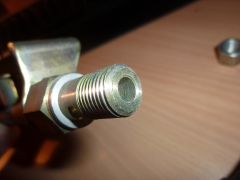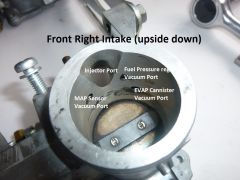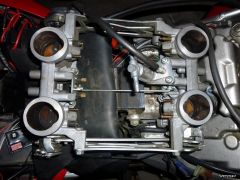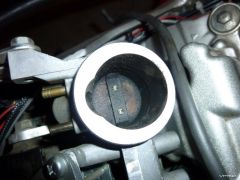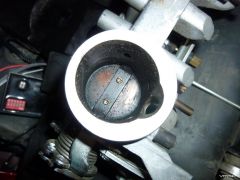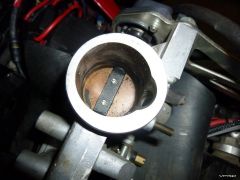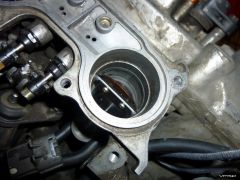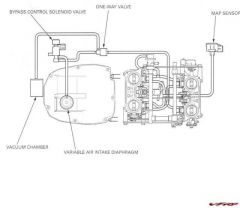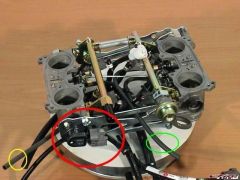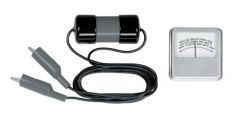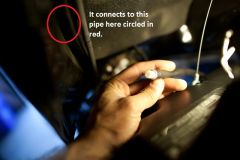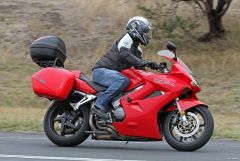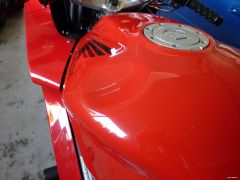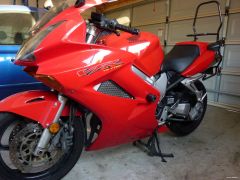-
Posts
1,317 -
Joined
-
Last visited
-
Days Won
11
Content Type
Forums
Profiles
Gallery
Blogs
Downloads
Events
Everything posted by kaldek
-
Larry you have a dirty mind.
-

How To Upgrade (change?) Your 2002+ Vfr Headlight Settingsq
kaldek replied to Tightwad's topic in Modifications
Yeah that short range light is what I want back. I don't feel the light I gain in distance was worth the cost of my short range light. Before I did the mod I had upgraded all four bulbs to Piaa bulbs. Not cheap but HUGE difference in light. Long and short distance light. Im going to go back to stock wiring for now.. Why not use all 6 filaments? Get the best of all worlds! I'm considering doing this myself soon, and definitely the all-six-filaments version. It should be a healthier option for the stator and regulator - about 300 watts consumed total which should cause the regulator to be regulating a lot less, and therefore putting less stress on the stator. -
Yep always right front.
-
Hey folks, I made a video on synchronising the starter valves.
-
I just couldn't leave it alone, so I made an O2 sensor video.
-
Hmm, I might be wrong on this. There are a lot of folks selling things called EFIE or "Electronic Fuel Injection Enhancer" which is used by people running HHO systems, and these little boxes send a customised voltage fluctuation to the ECU so that the ECU sees a falsified O2 sensor signal that forces the car's ECU to push a lean or rich trim. If you altered the O2 signal a bit to show a leaner signal than it's truly detecting, then I suppose you could use the same kind of thinking to tweak the output signal of the O2 sensor so that the resulting fuel mixture was right about 13.6 AFR, even with a narrowband O2 sensor. Again the only reason I can think that Dynojet is doing these O2 optimizers would be because the ECU on some bikes flashes a fuel injection error code when it sees a permanent 0.0 signal from an O2 sensor, which is what happens when you use an O2 eliminator.
-
I just did some workbench tests and I can categorically confirm that the Powercommander O2 sensor eliminators are indeed connected to the heater wire pins ONLY. Also, I confirmed that you would need a 1/2 watt resistor or better to stop it burning out. This is because the power supply to the heater is 12 volts, and at 330 ohms that equals 0.4 watts of power dissipated. I imagine that Dynojet experimented with higher resistances but possibly found that at higher than 330 ohms the ECU deciced that the heater element in the O2 sensor is faulty. So, 330 ohm 1/2 watt or 1 watt resistor sounds like the best option. Of course this depends on whether the signal is a true regulated 12 volts or if it's whatever the bike's R/R is putting out, which could be up to 14.8 volts. That equates to about 0.6 watts of dissipated power, so a 1/2 watt resistor would be getting pushed at that point. I also did some more research on the fuel mixture behaviour, and my best analysis so far is that connecting the O2 eliminators will force the ECU to go to a default rich condition when in closed loop mode. This is based on two sources/causes: An open circuit on the O2 sensor is the same as a 0.0 volt signal which indicates a lean condition. This would cause the ECU to trim by adding fuel. There appears to be a standard behaviour for closed loop systems where they default to a "mid range" rich map if the O2 sensor readings are pegged at zero for three minutes. There's nothing bad about this because the O2 eliminator is doing what it's advertised to do, which is cause the ECU to stick with a static fuel map. However it may take three minutes for that static map to kick in. I guess that means don't tune your bike until you've been on the dyno for about five minutes with a hot engine in closed loop mode? Really it all depends on how the Honda PGM-FI ECU behaves when it sees a constant 0.0 signal from the O2 sensors, which might even be different on 2002-2005 bikes and 2006+ bikes since they have different ECU hardware!
-
Stock VFR O2 sensors are narrowband and are disabled using O2 eliminators, forcing a permanent 0.0 voltage reading which would be seen by the ECU as a lean condition. Autotune uses its own wideband O2 sensor which comes with it. The bikes with O2 optimisers can *also* use an Autotune, but must be disabled in the throttle/engine positions where the bikes' own ECU would trim the fuel mixture.
-
OK, I was doing some research on this and totally barfed it up. So if the consensus on O2 eliminators is that they're just fooling the ECU into thinking the sensor is there (heater wire), doesn't that mean that the ECU will go to maximum enrichment trim and peg itself there? What about a device which sends back a constant 0.5 volt signal back to the ECU so it's always thinking the reading is 14.7 AFR (Stoichiometric)? Maybe the Honda ECU is so stupid it actually won't trim the fuel in closed loop mode if the reading is 0 volts (open circuit)? I see that Powercommander is now selling O2 sensor optimizers. These are an in-line device that goes between the stock O2 sensor and the ECU. The install guide for a Ducati 848 from Dynojet says that if you have a PCV you are not to put any values in any colums between 0-15% throttle or 0-5,250rpm, and no AFR values are allowed in Autotune tables in that area either! This must be because those bikes run Wideband O2 sensors which can't be easily disabled and need to have their signals intercepted rather than shut off. All the Dynojet documentation also says that "the O2 optimizer is trying to hit 13.6 AFR". That's not something you can do with a narrowband O2 sensor - they're either 14:1 (rich) or 15:1 (lean) and have no accuracy. Only a wideband O2 sensor can be used to set an AFR like "13.6" or something. Update: See my later post about how you could hit 13.6 AFR with a narrowband O2 sensor.
-
From the album: Throttle body pics
-
-
-
From the album: Throttle body pics
-
From the album: Tech Bits
This is a combination of a circuit breaker and ammeter which shows when current is detected and which direction the current is travelling down the wire. Brilliant! -
The only possibility is a deterioration of the windings where the wire butts up against the stator core. If it was wound improperly, they may have damaged the enamel coating on the wire at that time, and heat made the problem worse.
-
Also, since changing the flywheel and stator I rode to work today in heavy traffic. Even when idling with the lights on and fan running, my voltages never dipped below 13.2. That's way better than the old charging system. Definitely a recommended upgrade for 2002 owners who commute in traffic (especially in hot climates).
-
Probably. But I would first measure the 5th-gen unit because they might be the same size anyway. If you have or know the codes written on the stator and flywheel from a 5th-gen we can check it out. I'm not talking about the Honda code though, I'm talking about the code like "10CY" or similar written on each part. Check this out though - I see that Honda Parts house has the combined stator/flywheel upgrade kit ("AC Generator Set") for only $194! The part code is: 31100-MCW-315. A must for any 2002 owner, as I just paid $165 for the flywheel alone!
-
From the album: Tech Bits
-
Well I just did my flywheel and stator upgrade this evening, and it all went smoothly! I tell you, that strap wrench idea was fuggin' useless if you're a piss-weak nerd like me or don't have any friends handy. In the end, I removed the flywheel bolt using my airgun - BAP BAP BAP and off she came, just by putting the gearbox into sixth. If you don't have an air ratchet, you really will need to either be a strong mutha, or have a mate put everything he has into holding that flywheel in place with the strap wrench. One thing I thought would be a nightmare (but ended up being a piece of piss) was getting the flywheel off the crank. I mean I stuck that Motion Pro bolt in there, turned it a couple of times and I was freaking out because it wasn't getting tight until I realised the flywheel had already come off the crank. Anyways, with the new flywheel and stator I'm getting 22 volts AC at idle (cold) whereas I was previously getting 18 with the OEM 2002 stator and flywheel. I will definitely recommend that anyone changing their stator have an impact screwdriver handy, because the bolts holding the stator to the engine cover are TIGHT and the screw heads (they'll either be torx or hex) are soft and will round out before you know it. When my original 2002 stator died in 2010 (cooked itself), I couldn't get the bolts out and got so mad I attacked the entire stator with an angle grinder. It was good stress relief, but fugged up the stator alright. Gosh, is there anything left on this bike I *haven't* changed?!
-
-
Pros are that it works much like a lead acid battery with greater safety, less weight and continuous cranking power even when its going flat! The cons I think may only become evident as the battery ages, but in particular I'm curious what the actual capacity of the battery is. Shorai don't tell you because they know people would be put off by a raw capacity number lower than the lead acid battery they're replacing, hence the "Lead acid equivalent" rating on the Shorai. This is only a "problem" if your charging system dies and you're running off the battery, and we just don't know how long it would last in that instance. Update: I just found the specs for the battery which can be converted. The battery I purchased is rated at 60 watt/hour, which converts (60 watts / 14.4 volts) into 4.1 amp/hours. So it's a 4ah battery. Of course, they don't make lead acid batteries to "get you home if the charging system dies". They make them that big so that they have enough amps to crank a motor - the fact that they then have enough juice to let you ride around without a charging system for an hour or so is a lucky coincidence. Again, this makes the "lead acid equivalent" rating on the Shorai batteries a fair comparison. Shorai sell a "duration" version of each battery model, whose base amp/hour rating is higher, which would be a good idea for anyone running accessories when the engine is off.
-
My older Yuasa is still going, only replaced because it was getting old. The replacement Yuasa lasted 15 months, hence the Shorai.
-
Here's a good overview of the Shorai batteries from their CEO:



